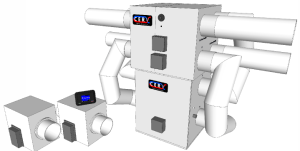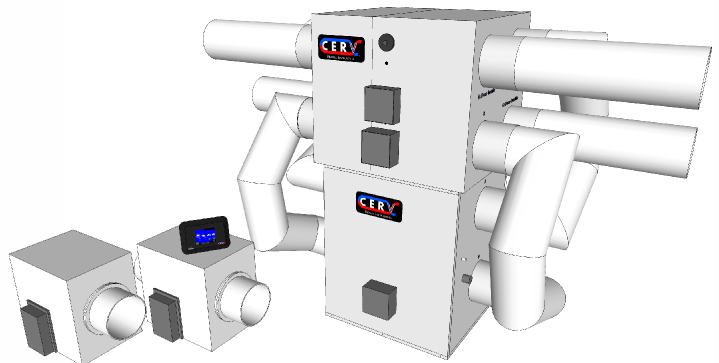I came across this Green Police 2 minute video (https://bcove.me/ryhxnqc9) and was impressed by the difference in the AC vs DC fans they tested.( These guys are often worth the 2 minutes of video they do on different green building products. https://bit.ly1DY27M8 )
Basically while doing the same work the DC fan was using 32 watts while the AC fan was using 120. That was more than I would have guessed and adds up in applications where the fan runs a lot like HRVs or ERVs or exhaust ventilation systems. I checked the panasonic whisper green vent fan that we have been using and as I expected it does use a DC Motor and had this to say about them “DC Motor with SmartFlow Technology-All WhisperGreen Select fans feature a revolutionary brushed DC motor that will perform as rated thanks to its built-in SmartFlow technology. When the fan senses static pressure, its speed automatically increases to ensure optimal CFM output.”
Heat pumps and furnaces are also using variable speed fans to distribute heat because of the increased efficiency and comfort. ”Though variable-speed units tend to cost more at the outset than single- or two-stage equipment, they can operate far more efficiently because their outputs vary according to the conditions of the home, rather than running at full or a single reduced capacity for the duration of a cycle. This can result in significant savings on monthly utility bills, reducing the payback period and offsetting the initial investment from the homeowner.”
Another advantage to variable-speed equipment is that it can more effectively control humidity levels in the home. A variable-speed heat pump is running optimally when it cools a home at a lower capacity during a longer cycle. This low and steady approach allows the heat pump to remove more moisture from the air, since the cycle is longer and more consistent.” https://bit.ly/1PveaBL
This happens with a mini split system that is set on dryer mode. We have had to use that setting in bermed and basement areas. I am not clear of the advantage of this over a properly sized dehumidifier. In our climate I find dehumidification can make almost all days comfortable without AC in an efficient home. We have a dehumidifier in a daylight basement room in our house and keep it closed up with a exhaust only ventilation system and it has reached a high of 78 this summer but that was comfortable with the humidity staying at 60%.
The new tech on the scene is the conditioning energy recovery ventilator (CERV)- “conditioning energy recovery ventilator (CERV)—an ERV augmented with a small heat pump. The heat pump actively precools the outgoing air and prewarms the incoming air (or vice versa), before the incoming air reaches the passive heat-exchange core and after the outgoing air has already passed through the passive core.Build Equinox (https://buildequinox.com/ ) systems also come with a “black box” smart control system that senses humidity, carbon dioxide (CO2), and volatile organic compounds (VOCs) in the air, turning the system fans and heat pump on and off as needed to address the building’s actual pollutant load and humidity conditions, rather than using a timer to determine the flow of ventilation air. When fresh air isn’t needed, the black box responds to variations in house temperatures, operating in recirculation, or “recirc,” mode to move air around and maintain an even temperature.” https://bit.ly/1JbWTbr

This sounds complex and I tend toward the simple solutions though with tight, efficient houses Indoor Air Quality is important to address. Besides I am writing this on a computer hooked up to the internet via Uverse posted through servers powered by windmills. Sometimes complex is what is needed.
boone guyton


